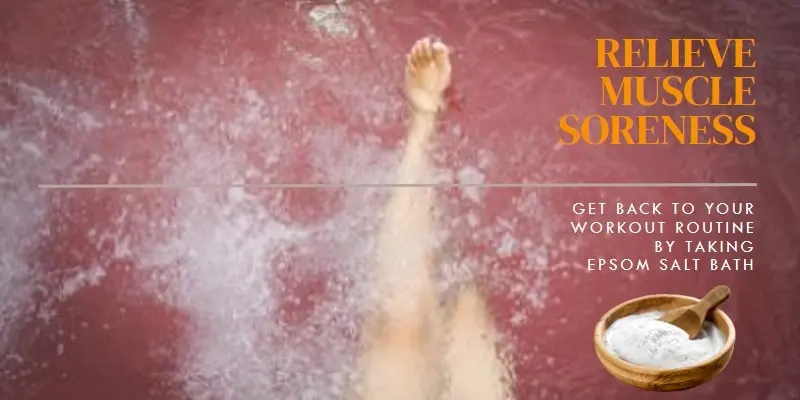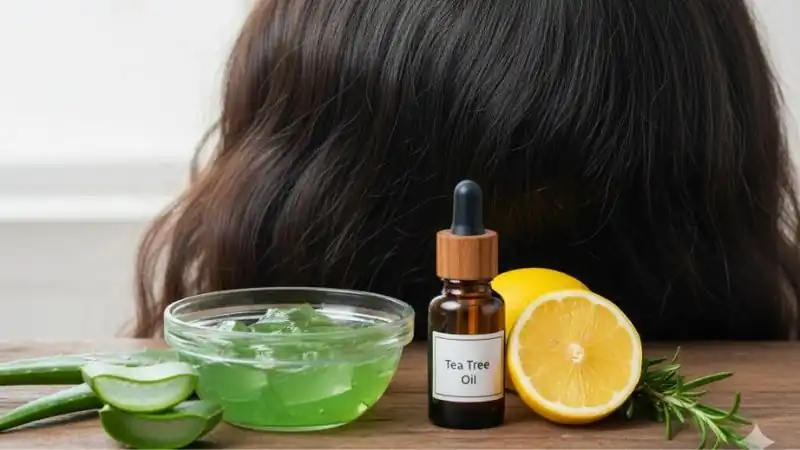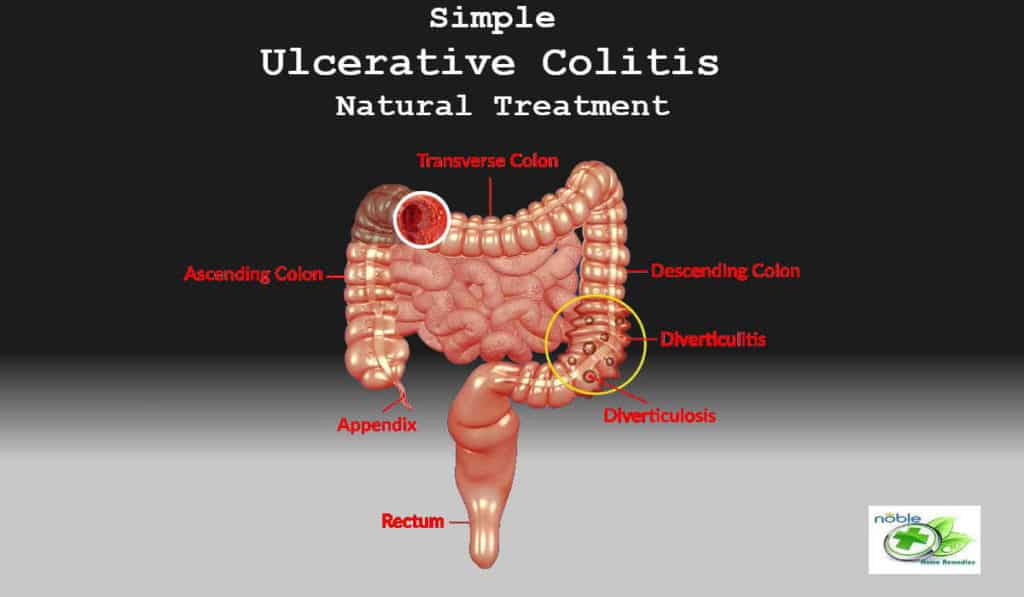Natural Witch Hazel for Yeast Infection: Antimicrobial
Are you feeling itchy and uncomfortable in your intimate area? Do you have abnormal discharge? Then it is likely that you are suffering from a Vaginal Yeast Infection.
This condition is more common than you may think and can be easily treated. In this blog post, we will explore the symptoms, causes, and treatment, primarily witch hazel, for yeast infection. How to get rid of a yeast infection in 24 hours? So, let’s get started and get you feeling better in no time!
A vaginal yeast infection is a common and uncomfortable problem that many women experience. Though it’s not a serious health threat, a yeast infection can irritate and make you uncomfortable. The good news is that there are simple and effective treatments available. One of the best methods is the use of witch hazel.
Women are especially vulnerable to vaginal yeast infections at certain stages in life, like pregnancy. Additional elements that can raise the likelihood of infection include having a weakened immune system and taking particular medications.
What Causes Yeast Infection?
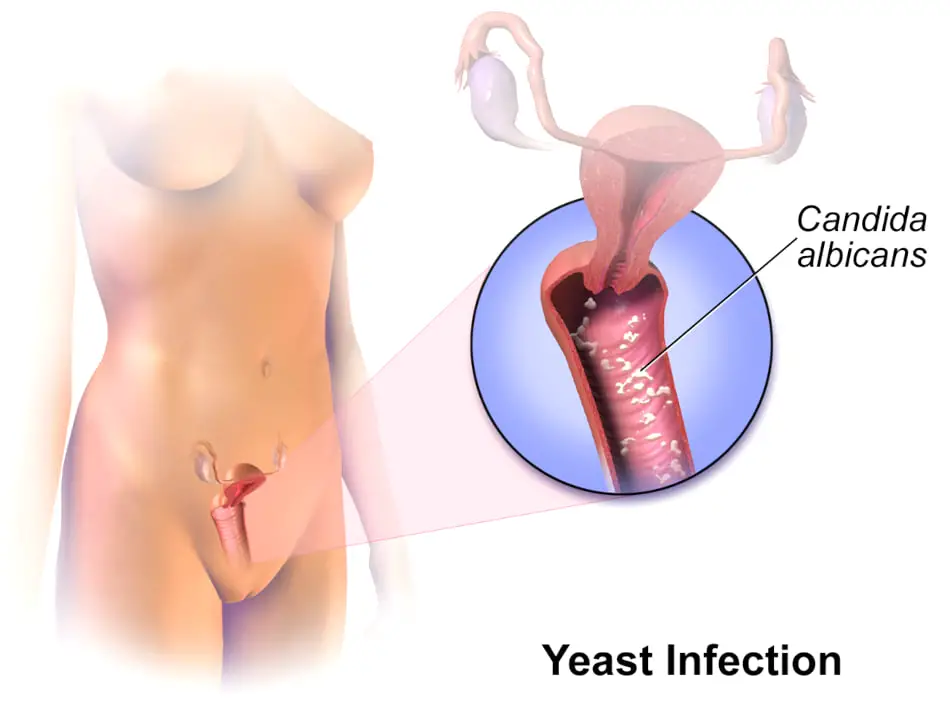
Vaginal yeast infections are caused by a fungus called Candida Albicans. Candida is a normal part of the vaginal flora, but it can overgrow in response to certain conditions, causing symptoms.
The most common symptom of a vaginal yeast infection is itching. Other symptoms may include burning, redness, and swelling of the vulva; a thick, white, cottage cheese-like discharge; and pain during intercourse. If the urethra is inflamed, peeing can also hurt.
Around three-quarters of women of childbearing age have experienced a vaginal yeast infection at least once in their lives, making it the second most common cause of vaginal inflammation (with bacterial infections being the most common). After menopause, women may be more likely to contract a yeast infection due to taking medications, such as estrogen hormones.
Let’s move on to learn about witch hazel for yeast infection!
What Is Witch Hazel?
So, what is Witch Hazel? This magical shrub has been used for centuries in traditional remedies and treatments, and it continues to be a popular ingredient in many natural health products today. Its medicinal properties make it ideal for treating skin irritations, bruises, inflammations, and other ailments. Its antibacterial properties make it a great addition to homemade skin care products.
Witch Hazel is a small shrub native to North America and parts of Europe, and its leaves and bark have been used for centuries by Native Americans for medicinal purposes. This plant has been used to treat a wide range of ailments, including skin irritations, bruises, and inflammations. It is also a powerful astringent, meaning it can help reduce inflammation and soothe the skin.
The most common form of Witch Hazel is a liquid extract made from the leaves and bark of the shrub. This extract is thought to have many health benefits, including anti-inflammatory and antiseptic properties. These properties make it an ideal ingredient in many natural health products, such as facial toners, creams, and gels.
In addition to its medicinal properties, Witch Hazel can also be used in home remedies. For example, it can be used to make a homemade facial toner or a compress for minor burns, bruises, hickeys, scrapes, and boils. Witch Hazel is also known to have antibacterial properties, which makes it a great ingredient for skincare products.
How Long Does a Yeast Infection Last?
- Untreated Yeast Infections: If left untreated, a yeast infection may persist for weeks or even months, worsening over time. While mild symptoms might seem manageable, delaying treatment increases the risk of more severe symptoms, such as intense itching, swelling, and irritation.
- Treat with Over-the-counter Medications: Over-the-counter antifungal creams or suppositories often relieve mild to moderate yeast infections within 3 to 7 days. Products like miconazole and clotrimazole are popular options that effectively reduce symptoms.
- Prescription Treatments: For severe or recurrent infections, a doctor may prescribe stronger antifungal medications, such as fluconazole, which is taken orally. Most people start to feel relief within a day or two, but it may take up to two weeks for the infection to clear fully.
- Recurring Infections: Chronic yeast infections, which occur four or more times a year, require a longer treatment plan. These typically involve an extended course of antifungal medication and addressing any underlying health issues, like diabetes or a weakened immune system.
Prevention Tips to Reduce Duration
To speed up recovery and prevent prolonged infections:
- Wear breathable cotton underwear.
- Avoid tight-fitting clothing.
- Maintain a balanced diet low in sugar and refined carbs, as yeast thrives on sugar.
- Stay hygienic but avoid harsh soaps that can disrupt the vaginal pH balance.
- Get Witch Hazel Remedy help.
Does a Yeast Infection Cause a Smell?
One common question people ask about yeast infections is whether they cause a distinct smell. The answer is nuanced, as yeast infections typically don’t produce a strong odor compared to other vaginal infections like bacterial vaginosis. However, there are important details to consider:
The Usual Symptoms of a Yeast Infection
A yeast infection is most often associated with:
- Intense itching and irritation.
- A thick, white, cottage cheese-like discharge.
- Redness and swelling around the affected area.
- Unlike bacterial infections, yeast infections rarely emit a foul smell. The discharge may have a mild, yeasty, or bread-like scent due to the presence of Candida fungi, but it is generally not overpowering or unpleasant.
When Odor Might Indicate Another Issue
If you notice a strong, fishy, or foul odor, it could be a sign of a different condition, such as bacterial vaginosis or a sexually transmitted infection (STI). These conditions often coexist with yeast infections, so it’s crucial to consult a healthcare provider for an accurate diagnosis.
How Does Witch Hazel Help with Yeast Infections?
Witch hazel is a famous botanical astringent known for its anti-inflammatory and antioxidant properties. It has been used for centuries to help treat yeast infection symptoms. While there is no scientific evidence to suggest that witch hazel is effective for yeast infection, it may work on the underlying problem of health infection.
Does witch hazel help with fungal infections? The active ingredients in witch hazel are tannins, which are known for their astringent properties. These tannins act as a natural antiseptic, which can help reduce the symptoms of a yeast infection, including irritation and inflammation. Additionally, the tannins can help reduce the itching and burning sensations associated with the infection.
In addition to its antiseptic properties, witch hazel also has antioxidant properties. Antioxidants help to protect the skin from free radical damage, which can reduce the risk of infection. The antioxidant properties of witch hazel can also help reduce skin irritation, which can help reduce the recurrence of the condition.
Witch hazel also contains anti-inflammatory properties, which can help reduce the inflammation associated with yeast infections. This can help reduce the discomfort caused by the infection and can help prevent the recurrence of the infection. Additionally, the anti-inflammatory properties of witch hazel can help reduce skin irritation, which can help reduce the risk of infection.
Here are ten reasons why witch hazel for yeast infection is effective:
- Antifungal Properties: Witch hazel has powerful antifungal properties, making it effective in treating yeast infections. Research has shown that its active ingredients, including tannins and polyphenols, can inhibit the growth of fungi and bacteria, preventing the spread of infection.
- Anti-inflammatory: Witch hazel is known to be a natural anti-inflammatory agent. This means that it can reduce inflammation and swelling in the affected area, providing relief from the itching and discomfort caused by a yeast infection.
- Antioxidant: Witch hazel is also a powerful antioxidant, helping to protect the skin and reduce the risk of further infections.
- Antibacterial: Witch hazel also has antibacterial properties, which can help to reduce the risk of a secondary bacterial infection.
- Moisturizing: Witch hazel is a natural moisturizer that can help to keep the skin hydrated and healthy. This can help to prevent further irritation and discomfort caused by a yeast infection.
- Astringent: Witch hazel is a natural astringent, meaning it can help to tighten and tone the skin and reduce the appearance of swelling.
- Soothing: Witch hazel is a natural soothing agent, helping to reduce redness, itching, and inflammation.
- Healing: Witch hazel is known to be a natural healing agent. It can help to speed up the healing process and reduce the risk of recurrence.
- Detoxifying: Witch hazel can help detoxify the body, helping to remove toxins and reduce the risk of a yeast infection.
- Natural: Witch hazel is a natural remedy, meaning it is safe to use, and there are no known side effects.
Yet, some claim witch hazel is not the right treatment for yeast infection because of its acidity. Meanwhile, they say witch hazel can effectively treat bacterial vaginosis. Therefore, you could try the witch hazel infection and observe if it improves for you. In case of no improvement in symptoms or getting worse, then do approach your doctor for treatment. In general, experts say that witch hazel is safe to use.
How To Use Witch Hazel For Yeast Infection?
To use witch hazel for yeast infection relief, you will want to purchase a bottle of witch hazel extract. It is for external use only.
Before you apply the witch hazel, make sure you clean the affected area with mild soap and warm water. Then, soak a cotton pad with witch hazel extract and gently apply it to the affected area. Let it sit for 10-15 minutes before rinsing it with cold water. Repeat this process two to three times a day.
Alternatively, you may use hazel topical solution wipes from drug stores and certain supermarkets.
Can tuck pads help a yeast infection? Yes, to some extent. For those who are looking for a more natural approach to treating a yeast infection, witch hazel tuck pads may be an option. They can help provide relief from itching and swelling associated with the infection.
Witch hazel is a natural remedy in effect shows yeast infection healing signs fast. However, it is important to understand that witch hazel alone will not cure a yeast infection. If your symptoms persist after using witch hazel, you should see a doctor for further treatment.
Rose Water Witch Hazel Vaginal Wash
Here is how you can make a homemade Vaginal Wash to treat a yeast infection. It is a witch hazel topical solution more effective along with other ingredients.
Required Ingredients:
- 1 cup of distilled Water
- ¼ cup of witch hazel
- 1 tbsp of rosemary oil
- 1/3 cup of rosewater
- 6 drops of lavender essential oil
Application:
Mix all the ingredients in a bowl. Fill it in a spray bottle. Spray it on a cotton pad or a cotton cloth and gently clean the affected area. Wash the intimate area with water after a few minutes.
The ingredients enhance the healing effect when used with witch hazel. Rose water contains plenty of antioxidants. Rose water and lavender oil work great together in soothing skin irritation. Meanwhile, rosemary oil helps in improving blood circulation. Witch hazel tightens up superficial cells and works to heal yeast infection symptoms.
Using Witch Hazel Postpartum
It is good to mention in this article the uses of witch hazel for postpartum, in addition to witch hazel for yeast infection. Using witch hazel postpartum is an oft-overlooked and highly beneficial practice for new mothers.
While the postpartum period can be one of the most emotionally and physically challenging times, witch hazel can offer some relief. From reducing inflammation to aiding in hemorrhoid care, witch hazel has a variety of postpartum uses.
One of the most beneficial postpartum uses of witch hazel is as an anti-inflammatory. Witch hazel contains tannins, which are known to reduce inflammation, making it a great natural remedy for postpartum swelling and discomfort. It can also be used to reduce itching and soreness caused by postpartum hemorrhoids and can help reduce the risk of developing a postpartum yeast infection.
The astringent properties of witch hazel can also be beneficial for postpartum care. Its natural antiseptic properties make it an excellent choice for cleansing and healing the area after childbirth. It can also help to reduce the appearance of stretch marks and other skin blemishes that sometimes occur postpartum.
You may buy and try:
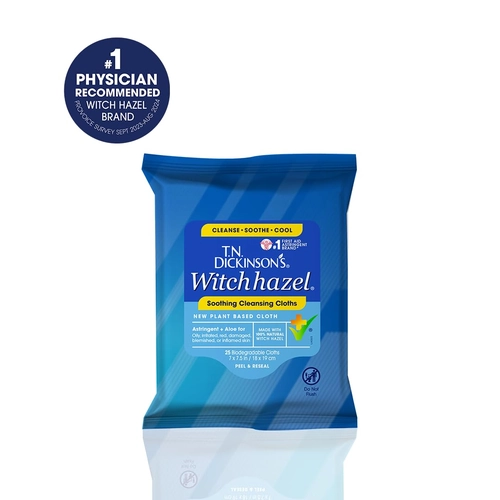
T.N. Dickinson’s Witch Hazel Soothing Multi-Use Cleansing Cloth
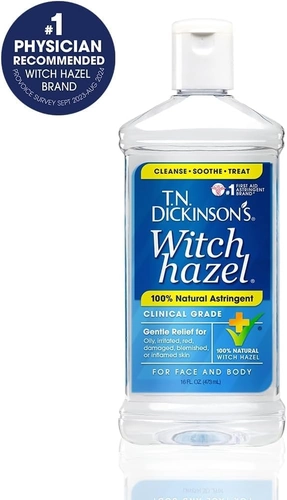
T.N. Dickinson’s Witch Hazel 100% Natural Astringent for Face and Body
Takeaway
Using witch hazel is one of the effective remedies for yeast infection and is a safe and effective natural remedy. With regular use, witch hazel can help to reduce the itching and irritation associated with a yeast infection. Just remember to consult with your doctor if your symptoms persist after using witch hazel.
Additionally, using witch hazel postpartum can be a great way to reduce inflammation, itching, and soreness naturally and to help cleanse and heal the area after childbirth. With a variety of postpartum uses, witch hazel is an oft-overlooked and highly beneficial practice for new mothers.
Source:
Noble Home Remedies adheres to rigorous sourcing standards, drawing information from peer-reviewed studies, reputable academic research institutions, and esteemed medical journals and associations. We prioritize using high-quality, trustworthy sources to maintain the accuracy and integrity of our content. You can learn more about how we ensure our content is accurate and current by reading our editorial policy.
- Vaginal yeast infection (thrush): Overview by National Library of Medicine
- Witch-hazel by Wikipedia
- Home Remedies for Vaginal Yeast Infection by NetMeds
- Why You Keep Hearing About Witch Hazel For Vaginal Health by Romper
Trust in your purchase:
Every product featured on our site has been carefully researched and selected based on quality, customer ratings, and positive reviews to ensure you receive excellent value for your money.
Please note:
This post contains affiliate links. If you make a purchase through these links, we may earn a small commission at no additional cost to you. This helps support our site and allows us to continue bringing you valuable content. Thank you!
Thank you for your precious time spent with NobleHomeRemedies.
You may also like:
Home Remedies for Impetigo
5 Best Home Remedies for Impetigo : Help Your Way Through Impetigo is a highly…
Epsom Salt for Muscle Soreness
Epsom Salt for Muscle Soreness: 4 Steps Soothing Solution We’ve all experienced that dull, aching…
Dandruff Remedies
How to Get Rid of Dandruff: 10 Natural Dandruff Remedies That Actually Work Have you…
Fall Allergies: Symptoms, Triggers, and Reliable Remedies
Fall Allergies: Symptoms and Triggers: , Reliable Remedies Spring is over, summer is over now…
Simple Ulcerative Colitis Natural Treatment – Causes and Symptoms
Simple Ulcerative Colitis Natural Treatment – Causes and Symptoms Over a million people in America…
Turmeric for Boils
Turmeric for Boils: Clearer and Calmer Skin – 5 Natural Ways Boils, those painful and…


